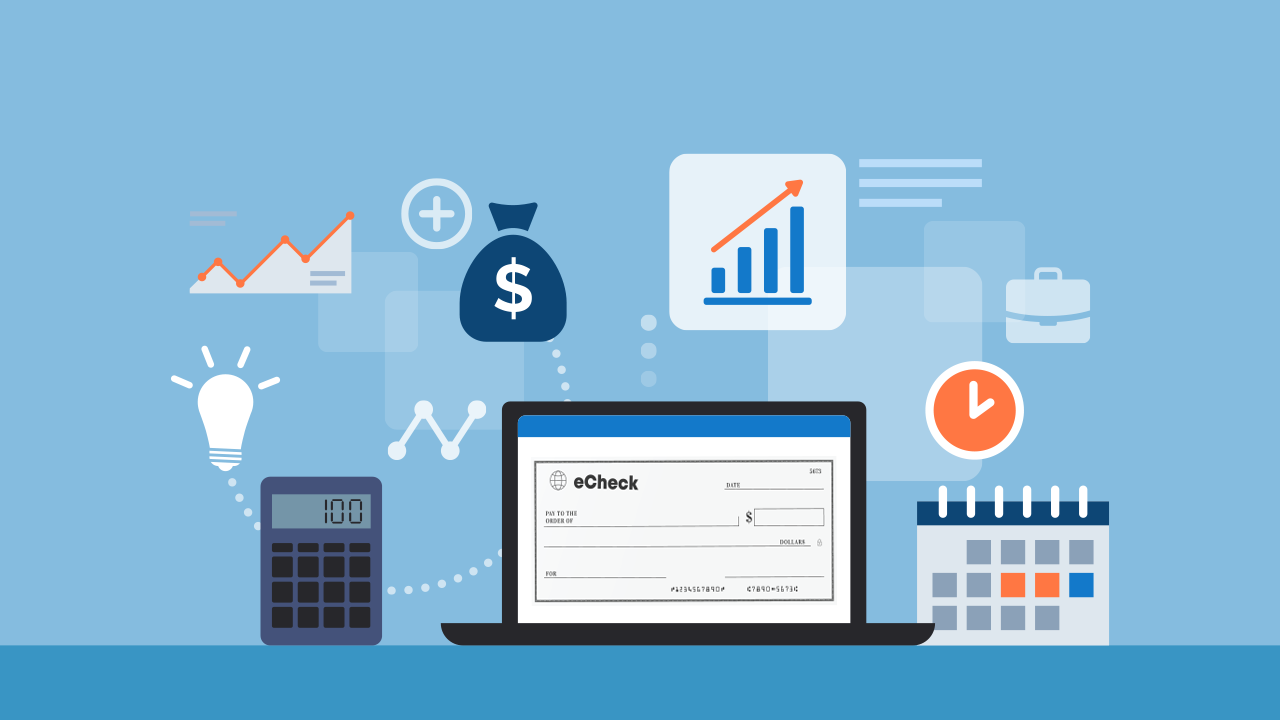
| December 4th, 2023 |
Streamlining Finances — eCheck Integration with Accounting Software: A Step-by-Step Guide!
In the fast-paced world of business, efficiency is paramount. Managing finances can be a daunting task, but with the right tools, it becomes a breeze. One such tool that’s gaining popularity for its convenience and security is eCheck. In this comprehensive guide, we’ll delve into the step-by-step process of integrating eChecks with your accounting software, empowering you to take control of your financial transactions with ease.
Understanding the Basics:
Before we dive into the integration process, let’s briefly understand what eChecks are and why they are becoming a preferred method for financial transactions. An electronic check, or eCheck, is a digital version of a traditional paper check. It contains the same information but is processed electronically, making it faster and more efficient.
Benefits of eChecks:
- Cost-Effective: Save on paper, printing, and postage costs associated with traditional checks.
- Efficiency: Faster processing times compared to traditional checks.
- Security: Enhanced security measures, reducing the risk of fraud.
Choosing the Right Accounting Software:
The first step in integrating eChecks into your financial workflow is selecting the right accounting software. Ensure that your chosen software supports eCheck processing and offers the necessary features for seamless integration. Popular accounting software like QuickBooks, Xero, and FreshBooks often have built-in eCheck capabilities or integrate with third-party eCheck providers.
Setting Up Your eCheck Account:
Once you’ve chosen your accounting software, the next step is setting up your eCheck account. This involves selecting a reputable eCheck service provider and creating an account. Look for providers that offer user-friendly interfaces, robust security features, and compatibility with your chosen accounting software.
Key Steps in Setting Up Your eCheck Account:
- Registration: Sign up for an eCheck account with a trusted provider.
- Verification: Complete the necessary verification steps to ensure security.
- Connect to Accounting Software: Link your eCheck account to your chosen accounting software.
Configuring eCheck Settings:
After setting up your eCheck account, it’s time to configure the settings to align with your business needs. This involves specifying default settings, such as payment preferences, approval workflows, and notification preferences. Tailoring these settings ensures that the eCheck integration aligns seamlessly with your existing financial processes.
Important Configuration Steps:
- Payment Preferences: Set default payment methods and frequency.
- Approval Workflows: Define who within your organization has the authority to approve eCheck transactions.
- Notification Preferences: Configure alerts for successful transactions, rejections, and other important events.
Integration with Accounting Software:
The heart of this guide lies in the integration process itself. The steps may vary depending on your chosen accounting software and eCheck provider, but the overarching principles remain similar.
Step-by-Step Integration Guide:
- Access Integration Settings: In your accounting software, navigate to the payment or transaction settings.
- Select eCheck as Payment Option: Choose eCheck as a preferred payment method.
- Link eCheck Account: Connect your eCheck account by entering the necessary credentials.
- Test Transactions: Before going live, conduct test transactions to ensure seamless integration.
- Verify Synchronization: Confirm that eCheck transactions are reflected accurately in your accounting software.
Training Your Team:
A successful integration isn’t just about technology; it’s also about ensuring your team is well-versed in the new processes. Provide training sessions to familiarize your finance team with the eCheck integration, covering topics such as initiating eCheck transactions, troubleshooting common issues, and understanding the security features.
Training Tips:
- Interactive Workshops: Conduct hands-on workshops to simulate real-world scenarios.
- Documentation: Provide comprehensive documentation for reference.
- Continuous Support: Establish a support system for ongoing assistance.
Monitoring and Optimization:
Post-integration, it’s crucial to monitor the performance of the eCheck system and make optimizations as needed. Regularly review transaction logs, address any issues promptly, and explore additional features offered by your eCheck provider to further enhance efficiency.
Monitoring and Optimization Strategies:
- Regular Audits: Conduct periodic audits of eCheck transactions for accuracy.
- Feedback Loop: Encourage feedback from your finance team to identify areas for improvement.
- Explore Additional Features: Stay informed about new features or updates from your eCheck provider.
Final Thoughts:
Integrating eChecks with your accounting software is a strategic move toward a more efficient and secure financial management system. By following this step-by-step guide, you’ll not only streamline your processes but also set the foundation for future financial success. Embrace the power of eChecks, simplify your transactions, and propel your business toward greater financial agility.
